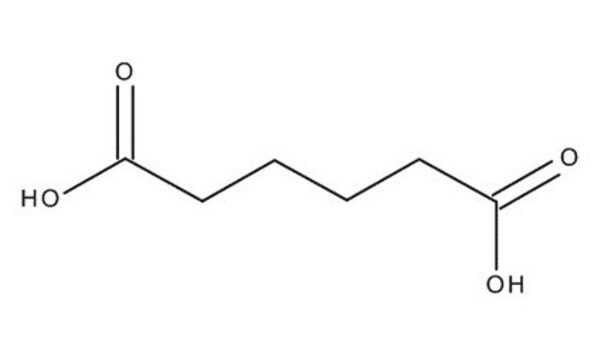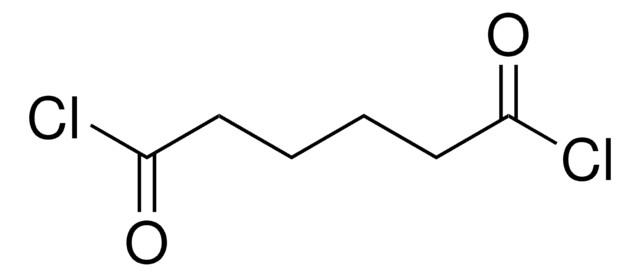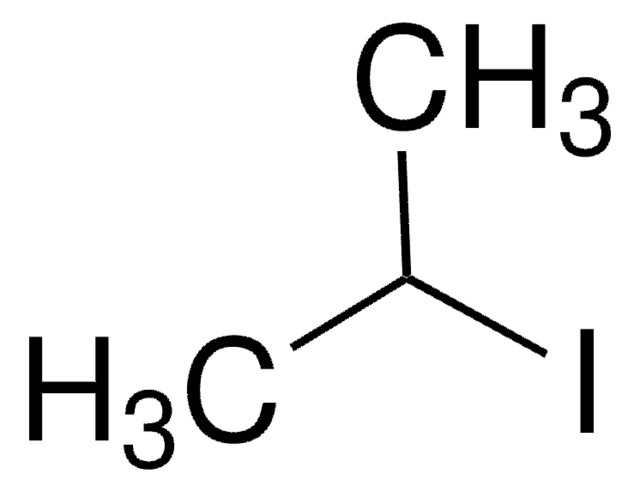W201103
Adipic acid
≥99.5%
Synonym(s):
Hexanedioic acid
About This Item
Recommended Products
biological source
synthetic
reg. compliance
FDA 21 CFR 117
vapor density
5 (vs air)
vapor pressure
1 mmHg ( 159.5 °C)
Assay
≥99.5%
autoignition temp.
788 °F
bp
265 °C/100 mmHg (lit.)
mp
151-154 °C (lit.)
solubility
H2O: soluble 23 g/L at 25 °C
application(s)
flavors and fragrances
Documentation
see Safety & Documentation for available documents
food allergen
no known allergens
Organoleptic
odorless
SMILES string
OC(=O)CCCCC(O)=O
InChI
1S/C6H10O4/c7-5(8)3-1-2-4-6(9)10/h1-4H2,(H,7,8)(H,9,10)
InChI key
WNLRTRBMVRJNCN-UHFFFAOYSA-N
Looking for similar products? Visit Product Comparison Guide
Signal Word
Danger
Hazard Statements
Precautionary Statements
Hazard Classifications
Eye Dam. 1
Storage Class Code
11 - Combustible Solids
WGK
WGK 1
Flash Point(F)
384.8 °F - closed cup
Flash Point(C)
196 °C - closed cup
Personal Protective Equipment
Choose from one of the most recent versions:
Already Own This Product?
Find documentation for the products that you have recently purchased in the Document Library.
Customers Also Viewed
Our team of scientists has experience in all areas of research including Life Science, Material Science, Chemical Synthesis, Chromatography, Analytical and many others.
Contact Technical Service













